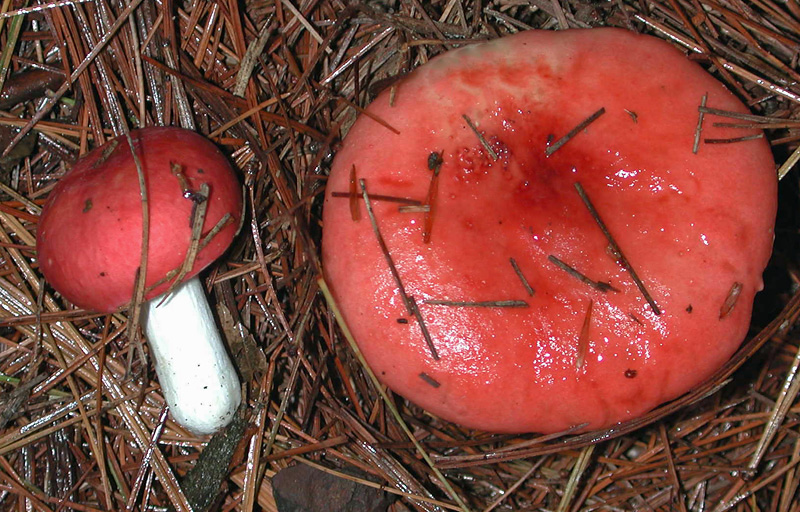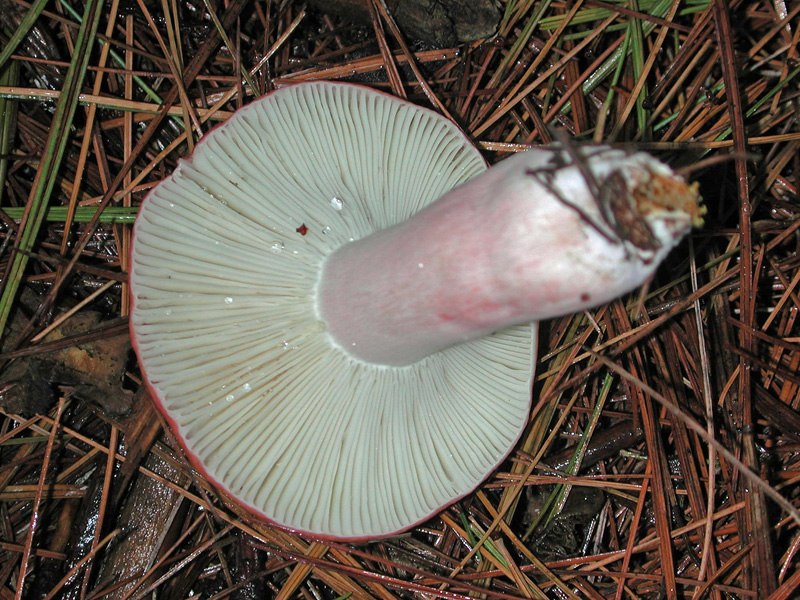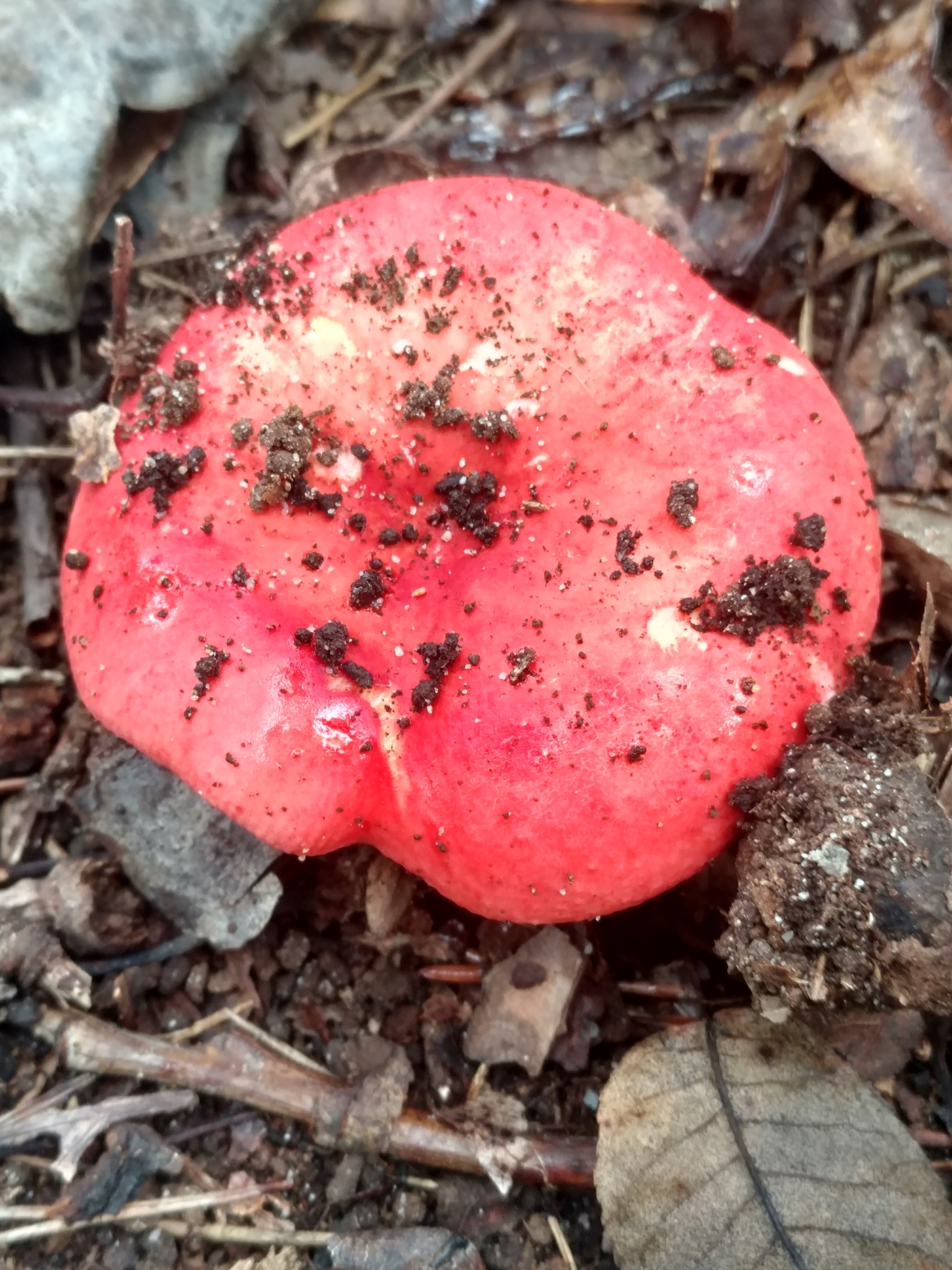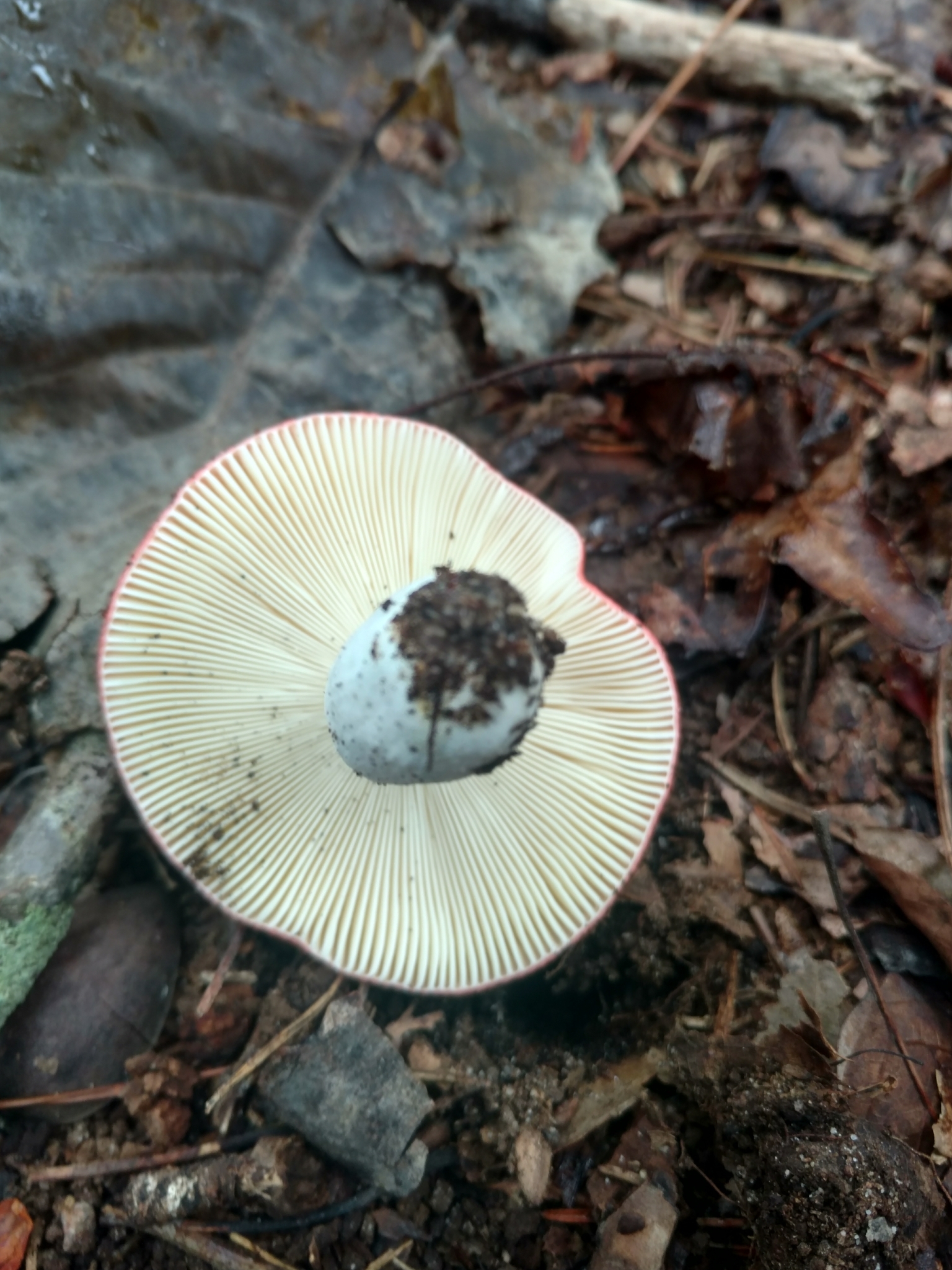

 Synonyms: Blood Red Russula, Russula rosacea.
Synonyms: Blood Red Russula, Russula rosacea.


The names Russula sanguinea and Russula emetica refer to European species that probably do not occur here although both have been widely reported from North America. These species have been excluded from the Maryland checklist. It remains unclear how many species of red-capped Russula occur on the East Coast.
Cap: Shades of red or rose, may have pale pink or white streaks, viscid; convex, flat or depressed in age; flesh white, spongy, brittle. Gills: Cream, slightly decurrent, close, forked near stalk. Stalk: White tinged with pink or red, often with yellow stains; smooth; flesh spongy. KOH turns cap orange (J. Solem, pers. comm.).
Found solitary, scattered on ground in pine forests.
Associated with pine forests.
There are 6 records in the project database.
| GA | AL | WA | FR | CL | MO | HO | BA | BC | HA | CE | PG | AA | CV | CH | SM | KE | QA | CN | TA | DO | WI | SO | WO |






